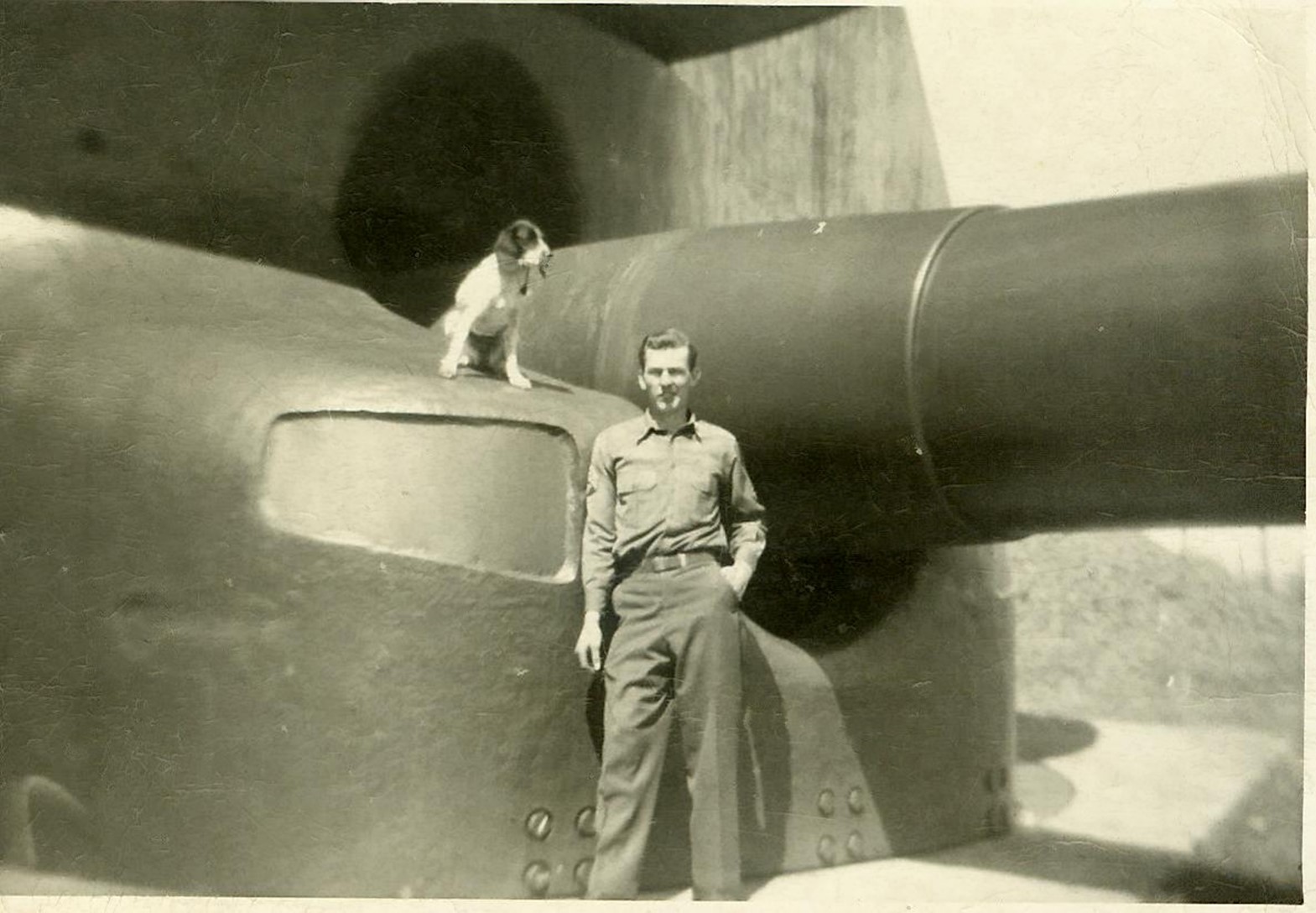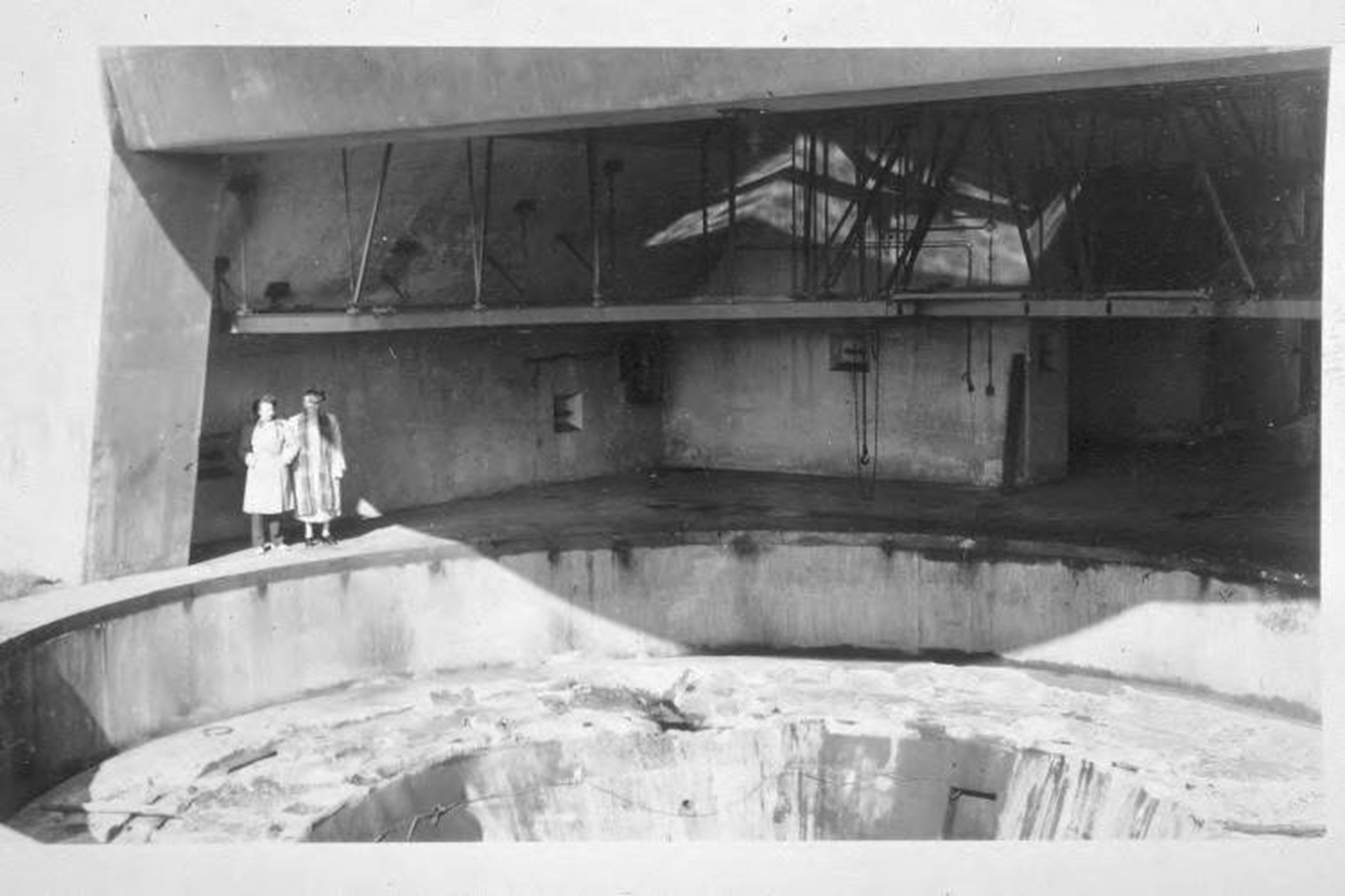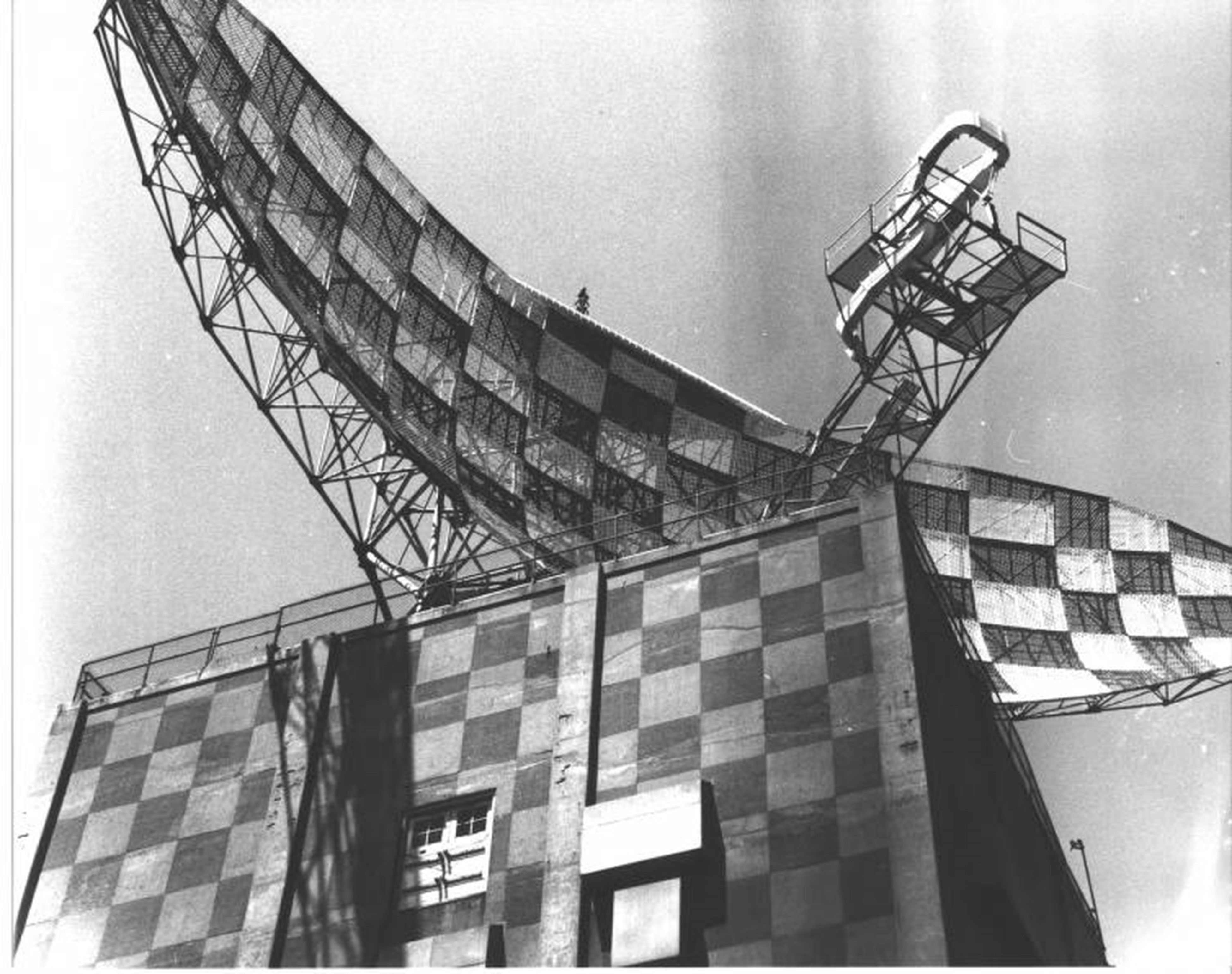
Is it any wonder that conspiracy theories abound when it comes to Camp Hero? Consider the shroud of secrecy in January 1942 when the Army purchased 468 remote acres in Montauk to use as a battery site “and for related military purposes.”
“Secretary of War Stimson signed the petition, filed in Federal Court, Brooklyn, which thus succinctly cloaked war plan details,” the Long-Islander reported at the time. “Officials refused further information.”
The truth was that Camp Hero was to serve as part of the Eastern Coastal Defense Shield, a system meant to protect coastal cities from attack by air or sea. The Army had to build its own bridge to bring in four enormous casemate guns, to be housed in concrete gun emplacements, as well as smaller guns, supporting facilities with a self-contained infrastructure, and a long, tall fence to encircle the whole works.
“To protect it from enemy attack the base was disguised as a New England fishing village,” Henry Osmers wrote in American Gibraltar. “Concrete bunkers had windows painted on them and ornamental roofs with fake dormers. The gymnasium was made to resemble a church complete with steeple.” Concrete fire control stations, intended to coordinate any shooting at enemy targets, were disguised as regular beach houses.
Camp Hero was built at least in part by local boys too young to be called to war. “They picked us up in East Hampton by the busload and took there every day,” Carl Dordelman is quoted as saying in the Osmers book. “And I went down there and planted shrubbery for the camouflage.”
It turned out that the guns were never used for anything but training, but Montauk residents recalled that they were loud enough to send liquor bottles flying off the shelves at Shagwong Tavern.

“The public knew there were guns at Camp Hero but were unaware of the size of the camp, the number of personnel, or the purpose of the operation,” Osmers wrote. At one point the facility was staffed by 600 enlisted men and 37 officers.

Camp Hero was closed down in 1947 but reopened and expanded by the Air Force for radar defense during the Cold War, when its signature radar tower – one of the largest in the world at the time — was installed. Even then the base was closed to the public, whose members in Montauk could hardly have missed the fact that an 85-foot tower with a 40-foot-high, 40-ton radar dish was under construction. The Air Force issued a formal announcement confirming that the tower was almost complete in April of 1960, and it held an open house shortly afterward.

One Comment
What size were the guns 16″ or bigger.I was a gunners mate on a U.S.destroyer in the mid 1960’s Thank You